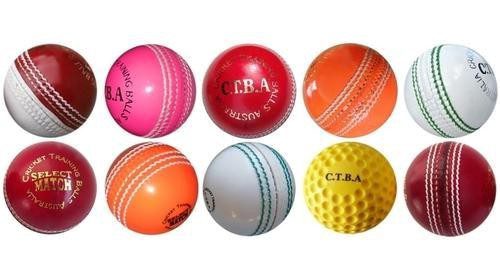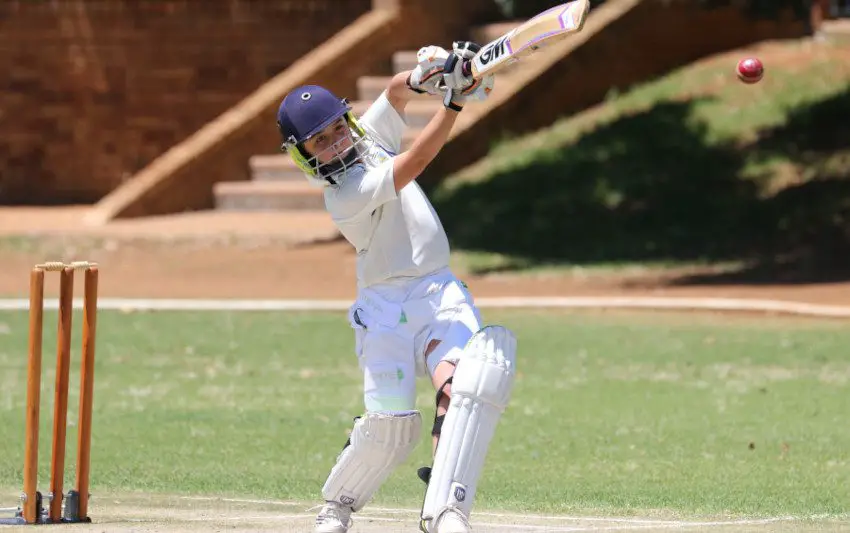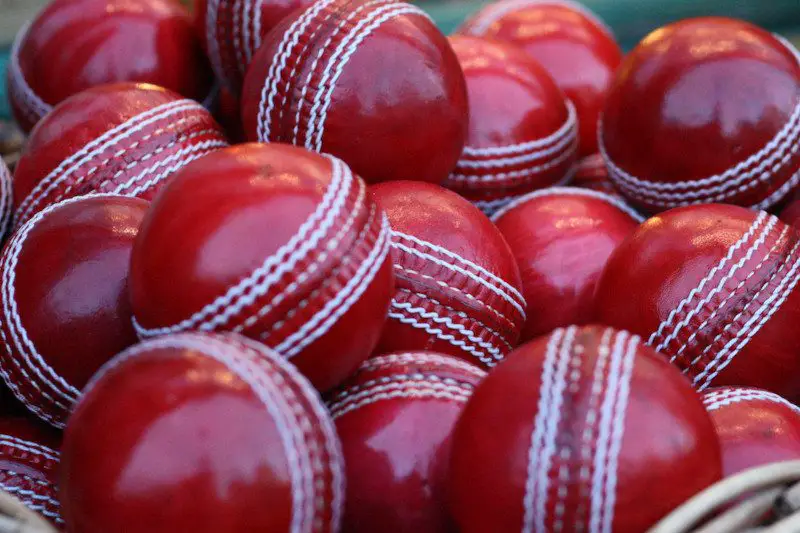Table of Contents
Novice cricketers, but even seniors, often use other balls than regular cricket balls for training purposes. There are dozens of alternatives around to keep your precious Kookaburra from being damaged, but we have listed the best five for your cricket practice.
5 Types of Practice Cricket Balls
At junior level and for seniors’ training, a number of alternatives to traditional leather cricket balls are available. These include:
#1 Synthetic Cricket Ball
A synthetic ball is made from composite materials and is generally seen as an ideal option for those who are new to cricket. It looks and feels a little like plastic and, with a seam added, it looks more like a cricket ball than other options.
The synthetic ball is, however, much lighter and it can get players used to the game with much less risk of injury. Synthetic balls will generally come in traditional red although there are white alternatives. Other balls are red on one side and white on the other.
A synthetic ball can be used in a training match situation but its primary purpose is to practise catching and fielding. It’s unlikely that these balls will be used at professional level but adult amateurs may use synthetic balls for training in those fielding and catching disciplines.
#2 Rubber Ball
A rubber ball is another product that can be used either for training or in friendly games of cricket. The design will typically include a seam although this will do little to affect the ball’s performance in terms of movement in the air or off the pitch.
Rubber balls are very durable and there should be no issues with wear and tear during the course of a practise match. However, they will tend to last for around ten days on average and are likely to need replacing after this time.
The rubber used in the manufacturing process is firm but it isn’t too hard. Therefore, the bounce is true and not so pronounced that the balls are unusable in a match situation. Protective equipment is recommended to avoid injuries for both batsmen and close in fielders.
#3 Cork Ball
This type of ball is made entirely from cork, both in its internal sphere and on its surface. With a stitched seam added, it looks exactly like a traditional leather cricket ball from a distance but there is a key difference.
Unlike the leather alternative, a cork ball is not going to produce swing when it is delivered and, therefore, it isn’t one that favours the bowlers. Batsmen may use a cork ball simply for training purposes when they know that there is unlikely to be any unusual bounce or movement.
Cricket is a game where there is supposed to be a good balance between bat and ball and that’s why cork is only used for training and not in a match situation. In addition, cork is not very durable and the balls would need to be frequently replaced if they were used for professional or amateur cricket matches.

#4 Tape Ball
In general, tape balls are made on an unofficial basis for fun games of cricket around the world. In fact, there are organised games and leagues taking place in certain countries.
A tape ball is traditionally made by taking a tennis ball and tightly wrapping some electrical tape around it. As a result, it’s quite hard and there is some resemblance to a traditional cricket ball in that respect.
There is no seam but the construction allows for a tape ball to swing quite prodigiously. Its use is prevalent in Pakistan where tape ball cricket is said to have originated in the 1960s. Pakistan has produced some of the greatest swing bowlers in test cricket so there is an obvious link here.
Tape balls are generally made on an ad hoc and amateur basis by players who are looking to set up a game. Over time, things have become more organised and tape balls used in official matches have to conform to certain uniform standards.
Tape balls aren’t commonly used in training situations but there are scenarios where batsmen could use them in order to practise different batting shots against swing bowling.
#5 Cricket Tennis Ball
Tennis balls are very versatile and have been used in impromptu games of cricket for many years. In school playgrounds, a tennis ball is ideal because it’s soft, causes less damage and has a good bounce on hard surfaces.
In the modern era, tennis balls are used in a more official, practise capacity and they now come in a number of different designs. In fact, there are some manufacturers who solely produce tennis balls for use within a cricketing environment.
Different weights and designs are used to produce hard and soft balls. The harder balls can more accurately replicate cricket match conditions while softer balls are more prevalent in friendly, ‘fun’ cricket activities. Balls generally come in two colours – traditional tennis green and a red version to more accurately match a regular cricket ball.
Closing Thoughts
While these training balls are not suited for an actual match situation, but they are perfectly fitting for developing and practicing specific techniques, whether it is for bowling, batting or how to catch when fielding. If you are unsure which one do you need, consult with your training partner or couch.


